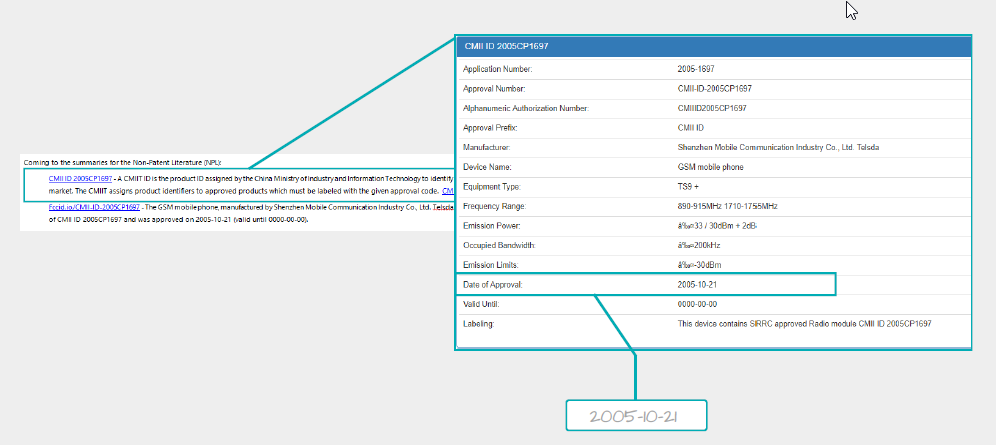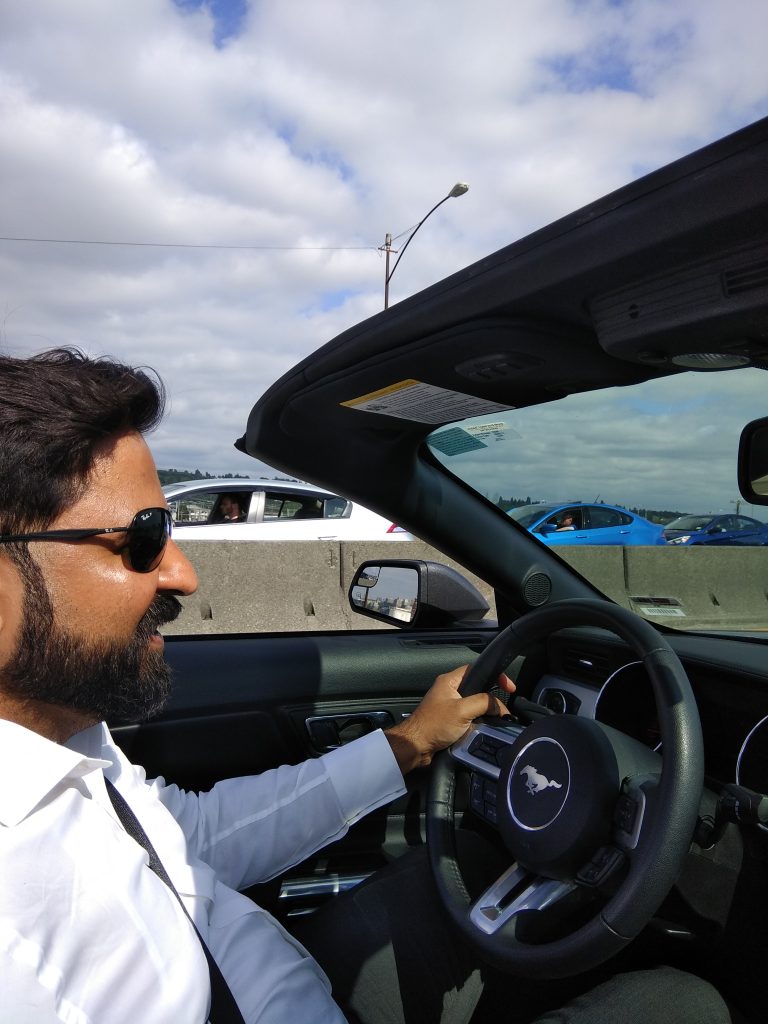Have you ever been in a situation where your IPR got instituted, but the PTO declared the challenged claim as valid?
If a challenged claim(s) is declared valid by the USPTO in IPR, and later a petitioner asserts earlier challenged claim(s) before a court, he has to overcome a challenge presented by 35 USC § 315(c).
The subsection estops a third party from asserting earlier challenged claim(s) if he “raised or could have raised” the ground during the re-examination.
However, this subsection doesn’t bar a third party from the assertion of invalidity based on newly discovered evidence. A third party just has to prove that the new evidence could not be discovered or used during the IPR proceedings.
A system prior art could help here. How? Well, this is the topic of discussion. However, before that, for the uninitiated, let’s clarify what is a system prior art, then we will move on to discuss its benefits.
The TOC below is an overview of what we will be discussing today. Further, you can use it to navigate the article as well.
What is A System Prior Art?
Let’s say you need to prove an invention to be invalid. You find a system – an app, a game, a software tool, or the machine using the claimed invention as described in its patent. Such systems or devices that act as prior art are known as system prior art.
A System Prior art is different than other non-patent literature as it speaks for its authenticity. Such a reference provides proof that the claimed technology was in practice before the critical date. Further, it becomes considerably easy to prove that it was available for public use from the date of release of a product.
Benefits of System as a Prior Art Over Other References
A System as Prior Art Have Passed “Raised or Could Have Raised” Estoppel Argument in Proceedings
In Acco v. PC Guardian, the defendant PC Guardian filed a request for an IPR in November 2005. It brought thirteen combinations of prior art to render 14 claims of the patent in suit invalid. However, the PTO concluded that the submitted references didn’t invalidate the claims.
In December 2007, PC Guardian presented a new set of invalidity contentions by using three 1980’s Macintosh portable computers as prior art. Plaintiff Acco argued that PC Guardian is estopped from challenging the validity of the patent as Macintosh computer was, or could have been, presented to the PTO during the reexamination proceedings.
PC Guardian argued that it was not possible to submit Macintosh computer as prior art to PTO because as per the MPEP, parties may disclose only “patents or printed publications” during re-examination. The court agreed and also found that combining the Macintosh computers with references submitted to the PTO renders Acco’s patent invalid.
Star Envirotech v. Redline Detection is another such case where a system was submitted as prior art, and the court considered it by rejecting the “could have raised” argument.
System Prior Art is Considered Superior Disclosure as Compared to Product Manual
In Star v Redline, the PTAB denied the ground of unpatentability in the final written decision for two claims. Redline challenged the two claims in the Central District of California court by submitting a LeakMaster A240 smoke machine as a reference which was made by Star.
Star argued that though physical systems aren’t considered as prior art in IPRs; however, Redline could have used the product manual which it possessed during IPR, and “could have raised it”.
The court upheld the physical system as a reference and denied the arguments of Star. The court in the following response considered a system as a superior reference than a product manual in term of quality of disclosure:
The physical machine itself discloses features claimed in the ‘808 Patent that are not included in the instruction manual, and it is therefore a superior and separate reference. For example, claim nine of the ‘808 Patent requires “locating a heating element within a closed smoke producing chamber.” . . . .It is undisputed that the LeakMaster’s instruction manual does not describe the LeakMaster’s closed smoke producing chamber. However, the Leakmaster itself, if disassembled, could shed light on whether it practices this claim limitation.
Better Option in Jury Trials
A system as a prior art reference makes it easy to understand how a particular technology functions as compared to a patent or other written references. Further, it provides solid evidence of patented technology in use before the critical date. Thus, it could help establish obviousness with clear and convincing evidence.
How our clients won the case through our System Prior Art
Finding an Android App as a Killer System Prior Art
In one of the invalidation search projects, we submitted a mobile app as a system prior art. The subject patent disclosed a method for predicting the user’s next location along with the time. It had a priority date of early 2013.
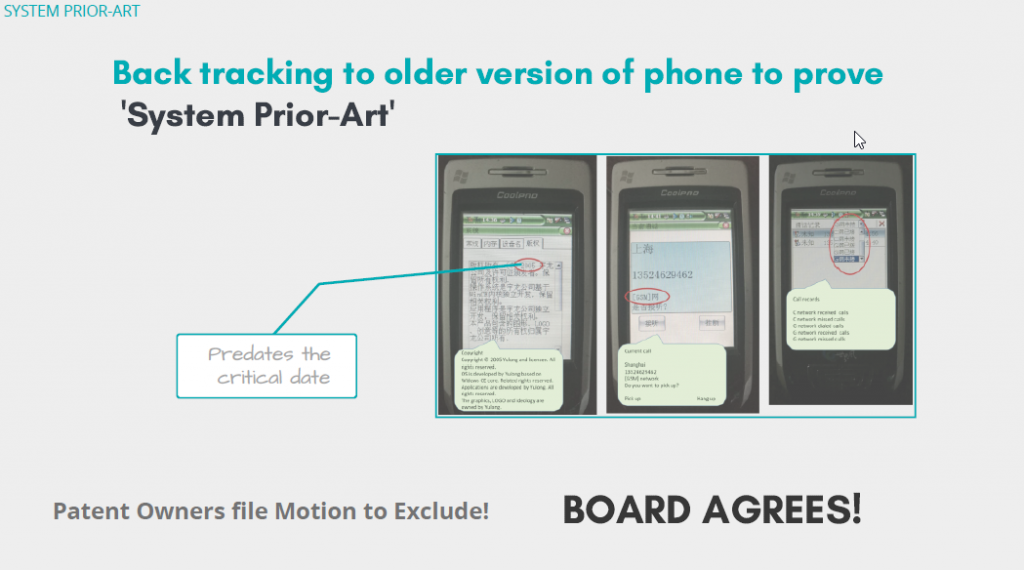
How our team found this reference, an older version of the app, and how they confirmed the date of launch of the App, is a story full of ups and downs in a search marathon. You can read all about it here: Alarm Out, Prior Art In
For this project, the team collated a lot of relevant information from an older version of the app. They reached out to a lot of developers to get the information. The information was sufficient to prepare claim charts to invalidate the claims of the subject patent.
However, the GreyB team knew that only submitting the claim chart won’t help the client achieve his objective to win. Hence, along with the claim chart, they submitted corroborative evidence to pass the Hearsay Hurdle.

The team found references confirming the date in the CMIIT ID database. The database has unique authorization numbers assigned by the China Ministry of Industry and Information Technology (quite similar to the FCC in the USA). This meant a guaranteed win for the client and brownie points for us! 😀
Another example – A Drone as a Killer System Prior Art
This search project was one of its kind. The client approached us after receiving ‘no result found’ reports from multiple search vendors so we were aware that it’s not going to be an easy game. We found a drone that can be submitted as a system prior art. We found this prior art reference in a YouTube video.
The subject patent was on a locking mechanism in drones with the driveshaft. After sifting through a lot of product manuals, research papers, blog articles, and patent documents, we only had some state-of-the-art type references on our plate and nothing was substantial enough to invalidate the patent.
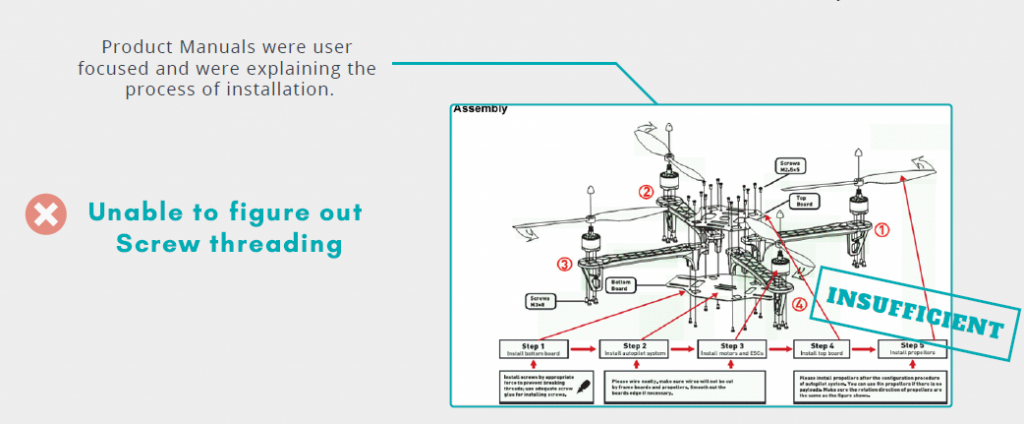
Navneet and Prasun were conducting this search project and FYI, Navneet has an uncanny interest in drones. This interest was actually a big factor in why the project got assigned to her. Therefore, we put a lot of effort that the right team works on your project.
After going through a lot of NPL and patent literature, Navneet thought of giving YouTube a try. Because this was the platform from where she gathered a lot of drone knowledge.
She found one video of around 5 minutes explaining the blade locking mechanism. The video also had the model number of the Drone by DJI Flame Wheel. This was a great aid and an insight of sorts. Another amazing thing was the video was published before the cut-off date.
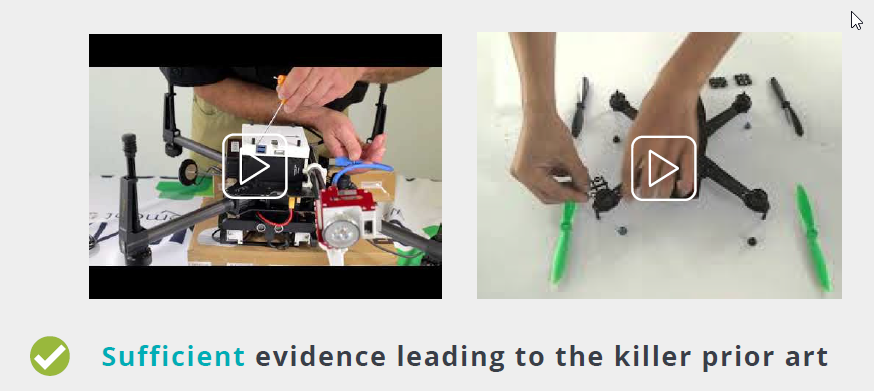
We had strong evidence to challenge the validity of the patent. Also, YouTube videos are considered a valid source of prior art in both the US and Europe. The USPTO’s training guide makes it explicit in the slide-15.
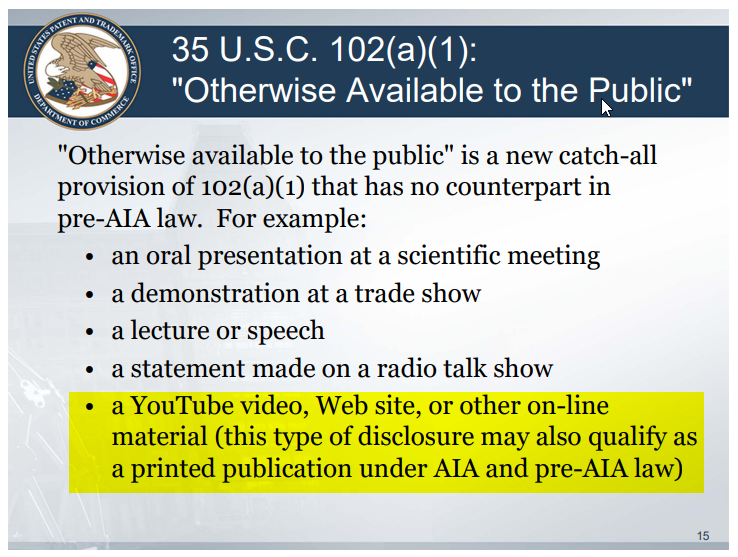
YouTube videos are also accepted by the courts as prior art. One of the instances of the same was HVLPO2 vs Oxygen Frog, where a Federal district judge in the Northern District of Florida held that a YouTube video can constitute prior art.
Conclusion
In a courtroom or in life, to be successful, our plan should focus on what we want, and not on the way things are at that moment. During or after an IPR or in a court proceeding, not considering systems as references is equivalent to considering only the widely popular options.
Further, the other party is well aware of the widely popular options. There are high chances that they got a strength check done before initiating a lawsuit. In such a case, to have an edge or to surprise your opponent, you can focus on what is not widely popular – but effective – system prior art.
“The secret of change is to focus all of your energy, not on fighting the old, but on building the new.”
– Socrates
Before I say sayonara for today, in case you find yourself stuck in a similar situation, let’s get in touch and discuss a strategy: Get in touch and let us help you win.
Authored By: Shelza Gupta, Manager, Patent Search, and Navneet Kaur, Senior Analyst, Patent Search
Additional Resources: Download the free whitepaper on 77 Patent Cases that can help you build strong Alice-based arguments in favor of your case:


